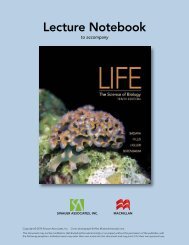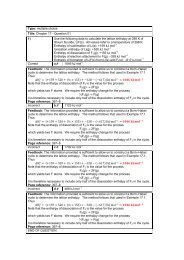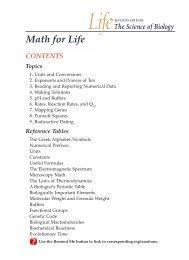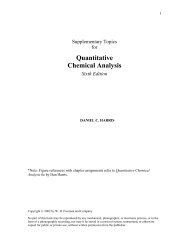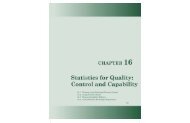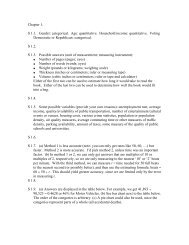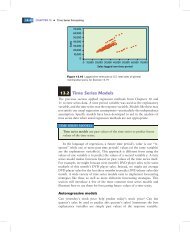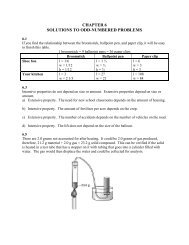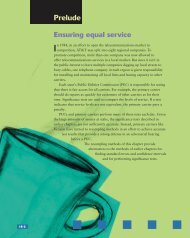SUPPLEMENTARY EXERCISES for ... - WH Freeman
SUPPLEMENTARY EXERCISES for ... - WH Freeman
SUPPLEMENTARY EXERCISES for ... - WH Freeman
- No tags were found...
You also want an ePaper? Increase the reach of your titles
YUMPU automatically turns print PDFs into web optimized ePapers that Google loves.
Section 1 29Chapter 4Section 1S4.1 When we toss a penny, experience shows that the probability (long-term proportion) of ahead is close to 1/2. Suppose now that we toss the penny repeatedly until we get a head. Whatis the probability that the first head comes up in an odd number of tosses (1, 3, 5, and so on)?To find out, repeat this experiment 50 times, and keep a record of the number of tosses neededto get a head on each of your 50 trials.(a) From your experiment, estimate the probability of a head on the first toss. What valueshould we expect this probability to have?(b) Use your results to estimate the probability that the first head appears on an odd-numberedtoss.S4.2 Obtain 10 identical thumbtacks and toss all 10 at once. Do this 50 times and record thenumber that land point up on each trial.(a) What is the approximate probability that at least one lands point up?(b) What is the approximate probability that more than one lands point up?Section 2S4.3 Probability is a measure of how likely an event is to occur. Match one of the probabilitiesthat follow with each statement about an event. (The probability is usually a much more exactmeasure of likelihood than is the verbal statement.)0, 0.01, 0.3, 0.6, 0.99, 1(a) This event is impossible. It can never occur.(b) This event is certain. It will occur on every trial of the random phenomenon.(c) This event is very unlikely, but it will occur once in a while in a long sequence of trials.(d) This event will occur more often than not.S4.4 In each of the following situations, describe a sample space S <strong>for</strong> the random phenomenon.In some cases, you have some freedom in your choice of S.(a) A seed is planted in the ground. It either germinates or fails to grow.(b) A patient with a usually fatal <strong>for</strong>m of cancer is given a new treatment. The response variableis the length of time that the patient lives after treatment.(c) A student enrolls in a statistics course and at the end of the semester receives a letter grade.(d) A basketball player shoots two free throws.(e) A year after knee surgery, a patient is asked to rate the amount of pain in the knee. Aseven-point scale is used, with 1 corresponding to no pain and 7 corresponding to extremediscom<strong>for</strong>t.S4.5 In each of the following situations, describe a sample space S <strong>for</strong> the random phenomenon.In some cases you have some freedom in specifying S, especially in setting the largest and



